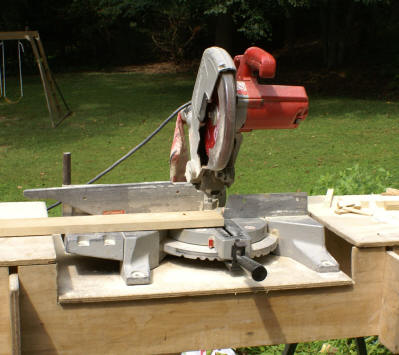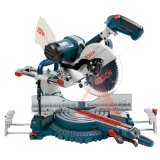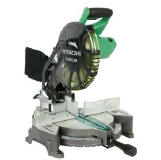Introduction to the Miter Saw

The chop saw, (also known as a miter saw, and chop box) is one on the primary tools of a finish carpenter. It allows the carpenter to make repeatable accurate cuts at specific angles.
There are three types of miter saws; the basic miter saw, the compound miter saw and the sliding compound miter saw.
All three come in several sizes from 8" to 16". The size refers to the diameter of the blade.
- The basic miter saw cuts with a
chopping motion and will only cut angles on the horizon
plan.
- The compound miter saw also
cuts with a chopping motion but will cut angles on
both the horizontal plan (referred to as a miter) and
the vertical plan (referred to as the bevel).
- The Compound Sliding Miter Saw
(CSMS) has all the functions of a compound saw but the
blade and motor are on rails that allow it extend
forward and cut wider material.
SAFETY FIRST
The first thing to understand about the chop saw is that it cuts fingers as well as it cuts wood.
I have personally seen carpenters cut their fingers on these saws, itís not a pretty site.

Sliding compound miter saw |
|

Standard compound miter saw |
Donít rush, most accidents Iíve experienced were because I was rushing and ignored safety procedures.
ALWAYS
- Give your saw undivided
attention when you are using it.
- Read and follow the instructions of your specific saw.
- Wear your safety glasses
- Inspect the blade for missing teeth and sharpness. A dull saw tends to grab and throw the wood.
- Make sure the saw is sitting on a stable table and is not wobbling.
- Ensure the work is well supported. I never use a saw without a chop saw table that gives me several feet of support.
- When using a compound sliding
saw always start the cut at the front (closest to you)
of the board and push the saw back against the rotation
of the blade. If you pull the saw you risk the blade
"jumping"